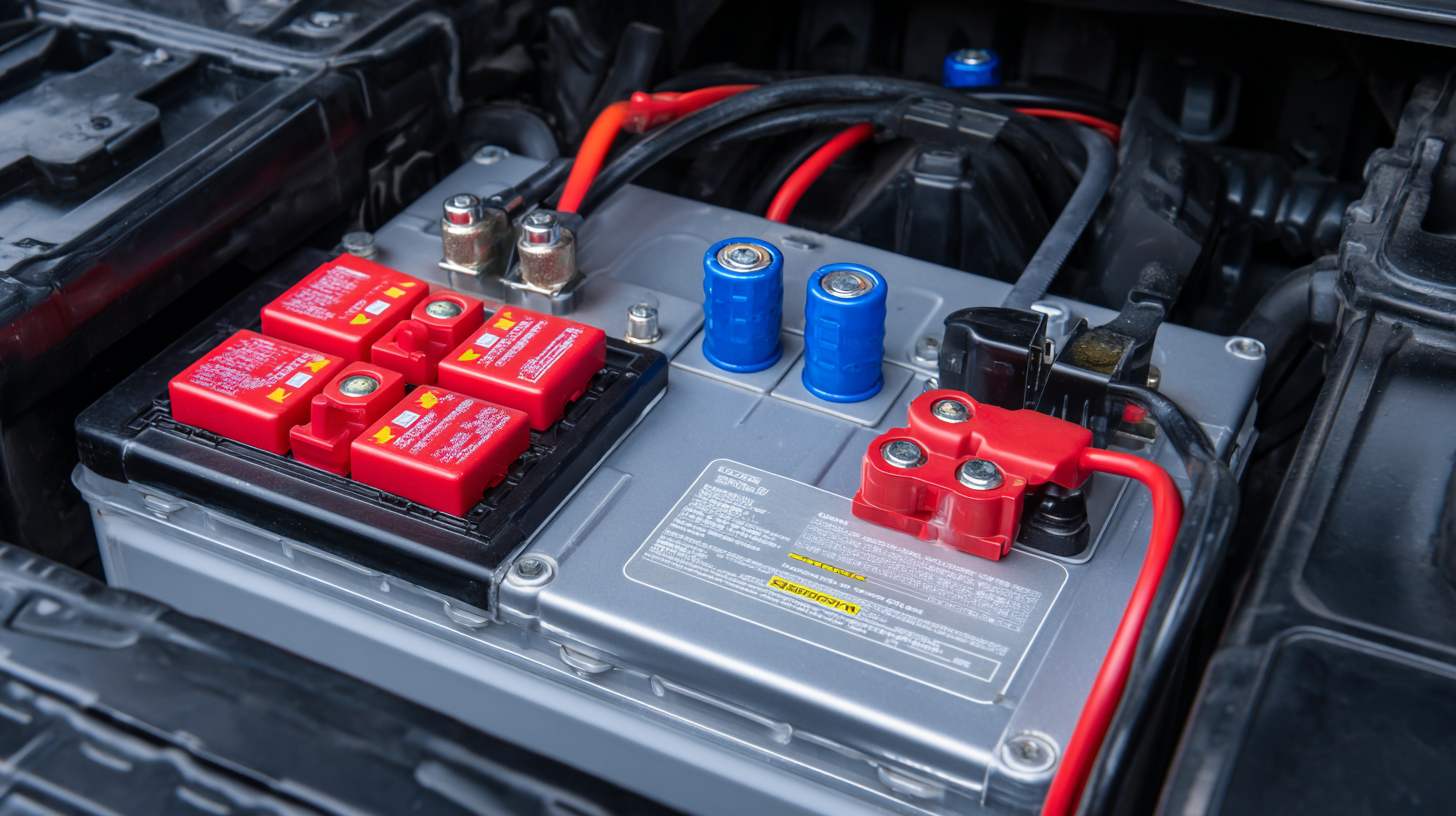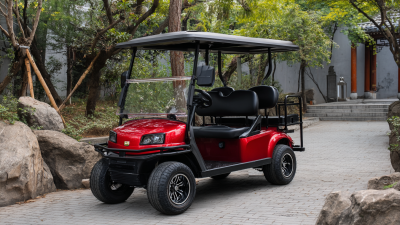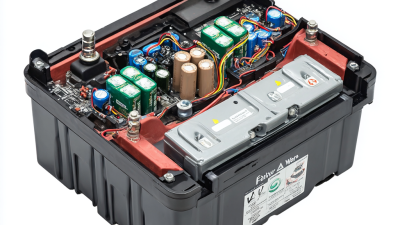Factory Tour
Unlocking the Power of Auto Lifepo4 Start Batteries: A Deep Dive into Their Advantages and Features
The automotive industry is undergoing a significant transformation, with the advent of advanced technologies enhancing vehicle performance and efficiency. Among these innovations, the Auto Lifepo4 Start Battery has emerged as a game-changer, offering a compelling alternative to traditional lead-acid batteries. According to a recent report by MarketsandMarkets, the global lithium-ion battery market, which includes lifepo4 batteries, is expected to reach $129 billion by 2027, growing at a CAGR of 18.0%. This surge is driven by the increasing demand for lightweight, efficient, and durable energy sources that can support the growing electrification of vehicles. The Auto Lifepo4 Start Battery not only boasts a longer lifecycle—up to 10 times that of conventional batteries—but also provides superior safety features and rapid charging capabilities. With the potential to revolutionize the way we start our vehicles, understanding the advantages and features of Auto Lifepo4 Start Batteries is more crucial than ever for automotive enthusiasts and industry professionals alike.

Understanding LiFePO4 Battery Chemistry: The Key to Reliability and Performance
The battery chemistry of LiFePO4 (Lithium Iron Phosphate) has emerged as a game-changer in the automotive industry, particularly for start batteries. With an average cycle life exceeding 2000 charge cycles, LiFePO4 batteries can last up to four times longer than traditional lead-acid batteries, which typically average around 300-500 cycles. This remarkable longevity is largely attributable to the stable and non-toxic nature of the chemistry, which results in lower thermal runaway risks and higher thermal stability. According to a 2021 report by the International Energy Agency, the market share for LiFePO4 batteries is projected to grow by 25% annually over the coming five years, reflecting their increasing adoption in various applications.
The reliability and performance of LiFePO4 batteries also stem from their impressive discharge rates and excellent energy density. These batteries can offer a discharge rate of up to 10C, meaning they can release energy rapidly when required, making them ideal for start applications. Research from the Journal of Power Sources notes that LiFePO4 batteries maintain around 90% capacity even after extended storage, which is crucial for automotive applications. Moreover, their ability to operate efficiently across a wide temperature range—from -20°C to 60°C—further enhances their appeal, ensuring that drivers are supported regardless of environmental conditions.
Comparative Analysis of Auto Lifepo4 Batteries vs. Traditional Lead-Acid Batteries
When comparing Auto Lifepo4 batteries to traditional lead-acid batteries, several key advantages emerge that highlight the superiority of lithium iron phosphate technology. First and foremost, Lifepo4 batteries exhibit significantly higher energy density, allowing vehicles to travel longer distances without the need for frequent recharges. Additionally, they boast a longer lifespan, often exceeding 2,000 charge cycles compared to the 500-800 cycles typically seen in lead-acid batteries, making them a more cost-effective option over time.
**Tips:** Consider the specific energy demands of your vehicle when choosing between these battery types. For instance, if you frequently drive long distances or require quick acceleration, the enhanced performance of Lifepo4 may be more beneficial. Moreover, check for compatibility with your vehicle’s charging system, as Lifepo4 batteries might require different handling compared to traditional models.
Another advantage of Lifepo4 batteries is their improved safety features. They are less prone to overheating and do not produce harmful gases, significantly reducing the risk of explosions or fires compared to lead-acid batteries. This characteristic not only enhances overall vehicle safety but also minimizes maintenance concerns for users.
**Tips:** Always ensure that your battery is installed by a professional to maximize safety and performance. Lastly, consider investing in a smart charging system designed for Lifepo4 batteries to optimize charging efficiency and extend battery life.
Unlocking the Power of Auto Lifepo4 Start Batteries: A Deep Dive into Their Advantages and Features - Comparative Analysis of Auto Lifepo4 Batteries vs. Traditional Lead-Acid Batteries
| Feature | LiFePO4 Batteries | Lead-Acid Batteries |
|---|---|---|
| Lifespan | 2000-5000 cycles | 300-600 cycles |
| Weight | Lighter (about 50% less) | Heavier |
| Energy Density | Higher (160-200 Wh/kg) | Lower (30-50 Wh/kg) |
| Charge Time | 1-2 hours | 8-12 hours |
| Maintenance | Low (no maintenance) | High (requires regular checks) |
| Temperature Tolerance | -20°C to +60°C | 0°C to +50°C |
| Self-Discharge Rate | Very low (around 3-5% per month) | Higher (around 15-20% per month) |
Cost-Benefit Assessment: Long-Term Savings with Lifepo4 Start Batteries
 Lifepo4 start batteries, known for their longevity and efficiency, present significant cost-saving benefits over time. Unlike traditional lead-acid batteries, Lifepo4 batteries boast a much longer life cycle, with many models offering up to 2000 charge cycles compared to about 300 cycles for their lead-acid counterparts. This extended lifespan means that users can avoid frequent replacements, ultimately reducing the overall maintenance costs associated with battery replacements and disposal.
Lifepo4 start batteries, known for their longevity and efficiency, present significant cost-saving benefits over time. Unlike traditional lead-acid batteries, Lifepo4 batteries boast a much longer life cycle, with many models offering up to 2000 charge cycles compared to about 300 cycles for their lead-acid counterparts. This extended lifespan means that users can avoid frequent replacements, ultimately reducing the overall maintenance costs associated with battery replacements and disposal.
Moreover, the energy density of Lifepo4 batteries enables a lighter and more compact design, which translates into savings on shipping and installation. Their superior performance in extreme temperatures and resilience against deep discharges further enhance their cost-effectiveness, making them an ideal choice for automotive applications. As users increasingly recognize the long-term savings and environmental benefits of Lifepo4 technology, the initial investment in these batteries can yield substantial financial returns over time, making them a smart choice for both personal and commercial vehicles.
Enhanced Safety Features of Auto Lifepo4 Batteries: A Closer Look
Lithium Iron Phosphate (LiFePO4) batteries are becoming increasingly popular in the automotive industry, primarily due to their enhanced safety features. Unlike traditional lead-acid batteries, which can pose significant fire risks, LiFePO4 batteries are inherently safer due to their thermal stability. They can withstand higher temperatures and have a much lower risk of thermal runaway, making them suitable for various automotive applications where safety is paramount.

Another significant safety feature of LiFePO4 batteries is their robust structural design. These batteries often include built-in Battery Management Systems (BMS) that monitor charging and discharging cycles, protecting against overcharging, over-discharging, and short circuits. This advanced management not only prolongs battery life but also ensures optimal performance without compromising safety. Additionally, the non-toxic and environmentally friendly materials used in LiFePO4 batteries make them a safer choice for both consumers and the environment, further enhancing their appeal in the automotive sector.
Environmental Impact and Sustainability of Lifepo4 Battery Production and Disposal
The production and disposal of LiFePO4 (Lithium Iron Phosphate) batteries is increasingly recognized for its environmental impact and sustainability. Unlike conventional lithium-ion batteries that use cobalt and nickel, the materials used in LiFePO4 batteries are non-toxic and abundant, contributing to a lower ecological footprint. The extraction of lithium for battery production typically raises concerns about water consumption and pollution; however, the sustainable sourcing practices for iron and phosphate can mitigate many of these issues. The use of LiFePO4 batteries not only reduces harmful waste byproducts but also extends the lifespan of the battery, further diminishing the overall environmental burden.
In terms of recycling and disposal, LiFePO4 batteries offer promising advantages as well. They can be recycled effectively, allowing valuable materials to be recovered and reintroduced into the production cycle. This closed-loop approach minimizes waste and conserves resources, aligning with broader sustainability goals. Additionally, as the adoption of LiFePO4 batteries increases in automotive and renewable energy sectors, the demand for responsible disposal practices will grow, encouraging innovation in recycling technologies. The responsible management of LiFePO4 batteries from production to end-of-life is essential for maximizing their environmental benefits and supporting a greener future.
Advantages and Environmental Impact of LiFePO4 Batteries
Related Posts
-

Exploring the Advantages of Choosing the Leading 48v Lifepo4 Golf Cart Battery for Your Business
-

The Future of 72v Lifepo4 Golf Cart Battery Innovations for Global Buyers
-

How to Choose the Right 72V LiFePO4 Battery for Your Golf Cart: Essential Insights and Tips
-

Explore Reliable Quality: The Best 72v Golf Cart Battery from China for Global Buyers
-

Discover the Benefits of Using 51.2v 204ah Boat Battery for Your Marine Adventures
-

Understanding the Functions and Benefits of Household Energy Storage Batteries






